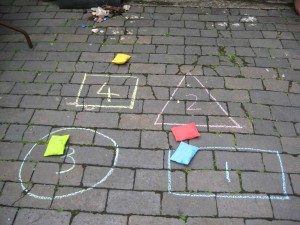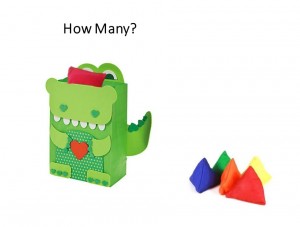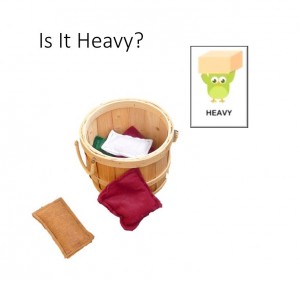
Funtastic Play Ideas: BEAN BAGS
Funtastic Play Ideas: BEAN BAGS
In each article of this series, five different ways of playing with a toy will be discussed. Let’s begin to explore the games and enjoy ourselves!
This article explores play with: Bean Bags.
Bean bags are differently sized and shaped bags or cushions filled with beans. They are easy to make or can even be purchased. Bean bags are great for playing with children in a variety of ways. Here are five different activities focusing on a variety of skills –
1. Catch it!
Use old cartons or baskets (large enough to hold one or two bean bags). In the game, two people are needed. One to throw the bean bag and the other to catch it using the carton or basket. Throw the bean bag overhead (as in baseball). This is a great game to build concentration and language while working through motor skills. Keeping a light basket or carton is easier for a younger child.
The game of catch can become more exciting when a target is set. Such as, let’s catch two bean bags (out of five). Take turns to play the game. It can become competitive, if needed and is great to build social communication when more of children/individuals are involved.
2. Which shape?
Use chalk, marker or tape to make shapes on the floor. Stand at a distance and get the child to aim a bean bag within the shapes. They can be aimed and thrown randomly into a shape the child wants.
To make the game slightly more interesting, the adult can define the shapes for the child to throw in. An instruction such as ‘Let’s throw a bean bag in the circle’ can be given. The child can learn shapes through this fun idea.
Give longer instructions and make it more challenging, ‘Put one (bean bag) in the circle and two (bean bag) in the square’. Once again, this can be used as a competitive game.
3. How many?
Take an empty box big enough to hold 5 bean bags. It is best to make smaller bean bags for this activity (around 2 to 3 inches big). Place a certain number of bean bags in the box and ask the child to count You can say, ‘How many bean bags are in the box? Let’s count.’ Take one bean bag out at a time, while counting them. This can be more interesting if a tune is added to it (such as the tune of ‘twinkle twinkle’).
Use visuals for counting to reinforce the learning.
Alternately, if the outside of the box has an alligator sticker stuck to it, you can feed the alligator a certain number of bean bags. E.g. “Let’s feed the alligator TWO bean bag. Yummy! How many? TWO! ….one …snap!…two….snap….Hmmm, Yummy!”
4. Is it heavy?
Take two small buckets. Fill them unevenly with bean bags, one heavier than the other. Take turns with your child to lift the buckets. Exaggerate when enacting which is heavier so the child can imitate it and learn the concept. Use appropriate visual cards for heavy and light to allow better understanding of the concept.
Make the learning more engaging, by using appropriate phrases and exclamations with each of the adjective. Such as, ‘The bucket is heavy…..ohhh! Too heavy, I need to drag it!’ Similarly, ‘oh! Wow! So light! I can lift it easily.’ Adding such language makes it easier for the child to relate and understand the concept especially when it will be generalized.
5. Game of colors.
This game requires bean bags of different colors as well as colored cards of the same colors. A large box is also needed. This is best played with a group of children (where each child has a set of bean bags to themselves). The leader (the adult or older child) stands near the large box and calls out a color (while holding the visual). The other children need to listen carefully (and see the visual), pick the same colored bean bag and run to throw it in the large box. And thereafter quickly return to their positions.
Encouragement to complete the task well and as quickly as possible makes it fun! This game not only builds the concept of color, but also – attention, motor and listening skill. This game can become a competitive one, too.
Sensory play helps a child to understand a sensation that is received by various textures. Also, it helps in experiencing fine motor skills as grip grasps, release, pressure, and textures. Play also helps in learning lifelong skills. There are many kinds of Play. One among that is Role Pay.
It also helps children in communication, Speech and language skills, social skills and awareness about themselves and their environment. When we talk about sensory play, it’s a pattern of play where an array of things is made available for a child. Then, the child is encouraged to have a free hand.
***
Hope you’ve enjoyed the ideas. Give us feedback. We would love to hear from you!
Don’t forget to subscribe with us to receive our most recent articles in your inbox!
***
- What is speech therapy and what Speech Therapist Do? - December 22, 2022
- 5 Simple Ideas to Make Flashcards Fun - June 28, 2018
- Should I use ‘NO’ with my child? - June 24, 2018






Leave a Comment
(0 Comments)